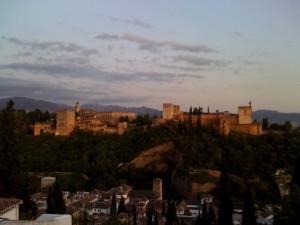At the Planetary Defense Conference in Granada, Spain
Happy Day to Earth, our only home planet (so far…).
April 23, 2009Back from the Planetary Defense Conference – May is going to be CRAZY!
May 4, 2009
Yesterday, we discussed for ~10h our current knowledge about the population of NEAs from orbit, surface composition, size and albedo and the potential of future surveys such as PAN-STARRS (PS1, a prototype will be running in a few weeks) and LSST (first light in 2015). It is very interesting to see the potential of these surveys and how they will operate observing the entire sky in a few days up to very faint stars (V=22 and 24 respectively) and providing millions of astrometric position of NEAs and other small solar system bodies. Someone mentioned that it will be the first time, we will have more observations than population of Earth provided by one survey.
Mid-infrared observations which are extremely useful to estimate the size and albedo of an NEAs (hence estimate the result of a potential impact with Earth). M. Delbo discussed the interest of observing them with the Spitzer telescope which is soon going to enter in its warm phase (these instruments need to be cooled down at ~7 K) so will lose its sensitivity unfortunately. However, a new generation of mid-IR telescopes are being developed and WISE, a 4-band imager will be launch in Nov 2009 on a Delta II rocket. This instrument will detect a lot of asteroids while performing its all-sky survey, so it will be useful to characterize the NEA population.
Today we are discussing mission concepts and deflection technologies, so it is going to be new and interesting for me. The S4P students, who worked over the summer at NASA Ames with me and various co-Is (Erik Asphaug was the PI) on a concept mission called DeX, to explore Dydimos, a binary NEA, presented their work and it was very well received.
More news tomorrow if the wireless works again. In the mean time find a picture of the Alhambra that I took last evening. This is a Arabic-style palace built in the 14th century which deserves to be visited (me dijeron…).
Nos vemos pronto,
Franck M.



